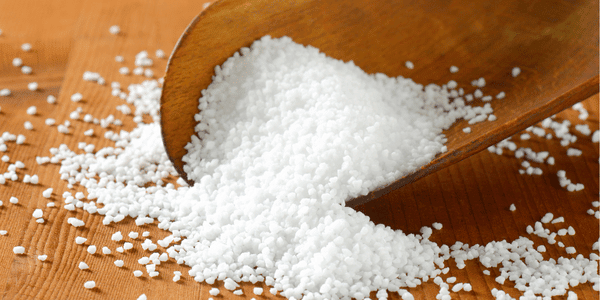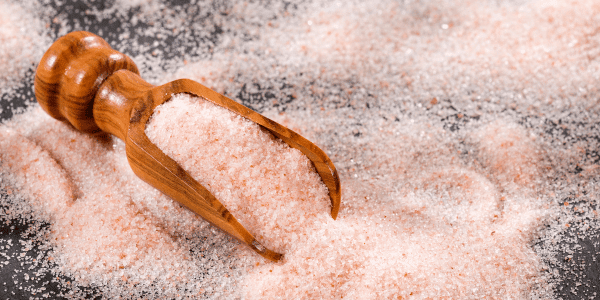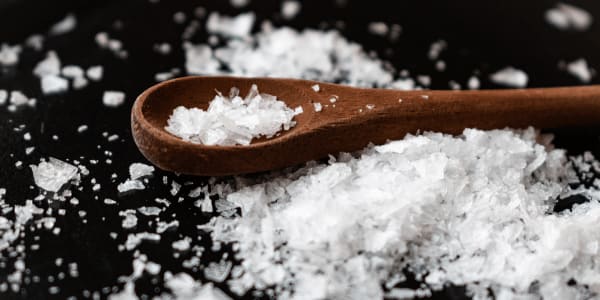A Guide to Cooking with Salt: How to Use 13 Varieties
Salt can be added to almost any recipe to elevate and enhance the taste of a dish. Derived from seawater and minerals, salt is produced in a variety of ways, delivering an assortment of intensities, flavors, and textures. In fact, there are 13 different salt types that can be used for cooking. To know what kind of salt works for what you’re preparing, follow our breakdown of the 13 types of salt and how to use each one.
13 Different Types of Salt Varieties
Are there different kinds of salt? Yes! Exploring salt varieties is a journey that stretches far past the dinner table. Each salt type comes with its own story and fascinating global origin. From salty and sweet flavors to coarse and fine textures and a kaleidoscope of colors, so much goes into making each one unique. Let’s dive into the kinds of salt and see what stands out.
1. Table Salt
Table salt, or iodized salt, is the most common salt variety in stores. Found in the prepackaged shakers you set on your dining table, table salt is sold in very fine white grains. Made of sodium chloride and an anti-caking agent to stop it from clumping, table salt works in the majority of recipes and is dissolvable.
Just be mindful of how much you use; in large quantities, it can give dishes, especially those on the savory side, a metallic taste.
2. Kosher Salt
The go-to salt variety for pro chefs, kosher salt’s larger, coarse grains are easy to pinch and sprinkle over most items. With name origins in Jewish culture, “koshering” is the term for using salt to draw out blood or moisture from meat.
With that in mind, people typically use kosher salt to prep or cook meat, poultry, fish, and vegetables, and not at the dining table.

3. Sea Salt
Versatile in everyday cooking, sea salt is from evaporated seawater. Sea salt’s production dates to prehistoric times. Available in medium or fine grains, it’s less processed and more mineral-rich compared to other salts.
Medium grains can be used as a finishing salt to add texture, and fine grains in cooking or baking recipes to add complexity.
4. Celtic Sea Salt
Celtic sea salt specifically comes from the Atlantic Ocean off the coast of France or Spain. Celtic sea salt is similar to standard sea salt, but is a bit chunkier and has a gray color thanks to the salt’s mineral density.
With its composition, Celtic sea salt is best used as a finishing salt, applied right before you serve roasted vegetables or grilled meats.
RELATED: A Complete Guide to Cooking Oils
5. Himalayan Pink Salt
As its name suggests, Himalayan pink salt originates from salt mines in the Himalayan Mountains of Pakistan. Its pink color comes from iron oxide, a chemical compound of iron and oxygen.
However, due to its reputation and unique look, the salt is much more expensive than most salts. If you choose to splurge, pink salt can be used to add a smooth salty and subtle sweetness to dishes.

6. Himalayan Black Salt
Created by cooking herbs, seeds, charcoal, bark, and rock salt together, Himalayan black salt looks like tiny pebbles and has a boiled egg-like scent and flavor. Initially pink when mined, the salt turns gray or black depending on its mineral content.
While that may be unappealing to many, it’s a popular salt for vegans looking to replicate eggs in their dishes, as well as for cooks concocting aromatic South Indian cuisines.
7. Fleur de Sel
Like Celtic sea salt, fleur de sel is from evaporated seawater found off the coast of France, specifically in the region of Brittany. Directly translating to “flower of salt” in French, fleur de sel is rare and expensive.
Unlike many of the other kinds of salt on this list, fleur de sel isn’t used to cook but rather as a flaky garnish for salads and baked goods, offering a crunchy texture or briny taste.
8. Flake Salt
Flake salt looks and feels just like its name: flaky! If you look closely, you might also notice a pyramid-like shape. This is another seawater-based salt, but unlike other seawater salts, its mineral content is low.
You’ve likely seen it sprinkled over cookies, but it can also be used with salads and meats to add a bright taste.

9. Hawaiian Red Salt
Carrying a nutty flavor, Hawaiian red salt has a red hue you can’t miss. That spectacular shade comes from mixing sea salt with volcanic clay rich in iron oxide, the same compound that gives Himalayan pink salt its look.
With flavor and color, Hawaiian red salt is a great decorative addition to dishes and can strengthen recipes that call for roasting or sautéing.
10. Black Lava Salt
Also boasting Hawaiian origins and a bold color, this salt variety works best to finish dishes or decorate. Getting its name and gravel-like look and feel from the volcanic charcoal it comes from, black lava salt has also been found to benefit digestive health, improve bone strength, and reduce inflammation.
11. Smoked Salt
Smoked salt delivers smoky flavors, ideal for chilis, sauces, and dry rubs. Just like delicious barbecued meats, smoked salt is made by being slowly smoked with a variety of woods. And we do mean slowly—the salt smoking process can take up to two whole weeks to complete!
This is because the salt is cold-smoked, and the smoking temperature never goes above 100 degrees. Luckily, that low and slow strategy can produce amazing flavors that are worth the wait.
12. Pickling Salt
With no iodine, minerals, or caking agents, pickling salt is only used for (you guessed it) pickling. Pickling is the process of preserving certain foods in brines. Many would say the salt looks like rice and has a coarse texture.
Though it can be considered a specialty kind of salt, you’ll likely find pickling salt next to table salt and kosher salt on store shelves.
13. Flavored Salts
That’s right, your favorite season can come with a seasoning of its own. By combining flaky salt with the dry version of a spice or herb, flavored salt is a convenient option to expedite the seasoning process.
Salt Varieties, Baking Soda, and So Much More
Now that you know about all the different varieties of cooking salts and types of salts, you can take your meals to the next level. Salt is an ideal flavor enhancer, but like other food-prep staples, it can do so much outside the kitchen, too. Similar to baking soda, salt varieties can be used to add grit to a slippery sidewalk, clean things, and more. To learn all the cool things baking soda can do, check out our article, “8 Unique Uses for Baking Soda.”
Kinds of Salt FAQs
What brand of salt do most chefs use?
Most chefs use kosher salt for everyday cooking. Its coarse texture makes it easier to handle, and it has a more precise flavor than other salts.
What is the healthiest salt to use?
Made up of 84 natural minerals, Himalayan pink salt is often regarded as the healthiest salt option on the planet, though that distinction is highly debated among experts.
How many different types of salt are there?
There are 13 main types of salt, including:
- Table salt
- Kosher salt
- Sea salt
- Celtic sea salt
- Himalayan pink salt
- Himalayan black salt
- Fleur de sel
- Flake salt
- Hawaiian red salt
- Black lava salt
- Smoked salt
- Pickling salt
- Flavored salts
What is the best salt to use for cooking?
Kosher salt is the best salt to use for cooking.